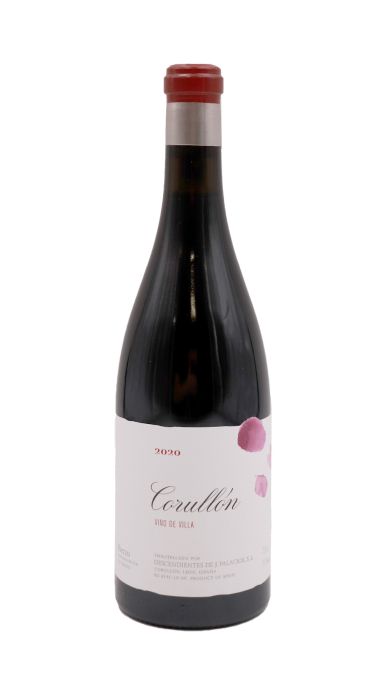Need Help Finding the right wine?
Your personal wine consultant will assist you with buying, managing your collection, investing in wine, entertaining and more.
By continuing, you agree to our privacy policy, consent to cookies, and confirm you are 21 or older.
I have read and agree to the Privacy Policy and Terms of Service.
YOU MUST BE 21 OR OLDER TO CONTINUE
NYC, Long Island and The Hamptons Receive Free Delivery on Orders $300+
Cool Wine Shippers Now Available.
Checkout using your account
Checkout as a new customer
Creating an account has many benefits:

2020 Descendientes de Jose Palacios Villa De Corullon
97 RP
Robert Parker | 97 RP
| Type of Wine |
Spain Red
: Spanish wines shouldn't be overlooked under any circumstances, as there are plenty of extraordinary wines coming from this country. There are also lots of grape varietals grown all over Spain. Some of the most gorgeous red varieties are the early-harvested Tempranillo, raspberry-flavored Garnacha, Bobal, Monastrell, as well as Cabernet Sauvignon, Syrah, and Merlot. |
|---|---|
| Varietal | Mencia |
| Country |
Spain
: Grapevines have been cultivated on the Iberian Peninsula for thousands of years, making Spain one of the oldest wine producing countries on earth. With nearly 1 million hectares under vine, Spain is in possession of more grapevines that any other nation in the world. Today, vineyard cultivation takes place in virtually every administrative district, making it a leading producer on today’s market. Spain’s vineyards generate an annual wine output of 40.7 million hectoliters, ranking it third in the world behind only France and Italy. Spain is a land of breathtaking beauty, diverse topography, complex cultures and a time honored tradition of viticulture. The country’s broad geographical values play a major role in defining the many wine styles produced. From the cool climes of Galicia and the snow-capped Pyrenees to arid Andalucía in the south, and every region in between the Atlantic and Mediterranean coasts, Spain boasts one of the most diverse terroirs in the world. The country’s myriad of soils and complex climate systems creates an expansive planting ground for a multitude of varietals. Tempranillo has long played an instrumental role in Spanish winemaking. It is important to note that of the 236,000 hectares being cultivated world-wide, 202,000 are planted in Spain. It is commonly utilized in the production of still red wines from Rioja, Ribera del Duero and Toro and has taken the world by storm. In the past few decades, wines produced in Rioja have been some of the most popular, and in 2017, wines with a “Rioja” label were the most purchased on the wine market. Bodegas Vega Sicilia, located in Ribera del Duero in northern Spain has been one of the most sought after producers hailing from Spain, and Tinta de Toro (otherwise known as Tempranillo everywhere else) has certainly placed its mark on the region and the world. Spain is also renowned for its production of sweet, raisened Moscatel, fortified Madeira, sparkling Cava and its rising, but shining star, Albarino, which hails from the Rias Baixas appellation of Galicia. Some of the most recognizable names in the world of wine hail from Spain. In the past few decades there has been a collision of New and Old World winemaking; one which has greatly contributed to the continued success of the Spanish wine industry. Modernization of vineyards, facilities and viticulture has greatly improved the significance of Spain in the wine market. Syrah and Merlot have taken root in Spanish wine regions and combined with the indigenous Garnacha (Grenache) Garnacha Blanca (Grenache Blanc), Godello and many others, the country has not only adapted to new styles of winemaking but also the ever changing palate of consumers. |
| Region | Bierzo |
| Producer | J.Palacios |
|---|
Need Help Finding the right wine?
Your personal wine consultant will assist you with buying, managing your collection, investing in wine, entertaining and more.